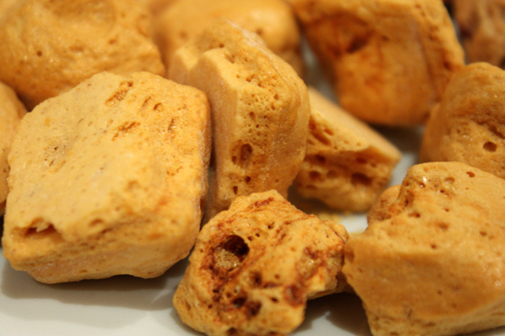
This is a bit of a soapbox post. Scroll to the bottom if you’d rather just read about chocolate eating…
“In seeking value for money, we can easily lose sight of our values.”
Those of you who visit the site regularly may have noticed that I’ve added a little ‘do something good’ section to the right-hand sidebar, and a logo for the Chicken Out campaign. I wanted to highlight the cause, which is to end the intensive factory farming of chickens. It was launched by Hugh Fearnley-Whittingstall and justifiably has the support of a raft of other slebs. I won’t reiterate all the information here, especially since their website is so comprehensive – I urge you to take a look – but here are a few of the key facts:
- Around 800 million chickens are slaughtered in the UK each year, and it’s estimated that 90% of these chickens are reared intensively. This meat is usually the cheapest on the supermarket shelf and it is what is found in most pre-packaged sandwiches and restaurant meals.
- The chickens are farmed in barren and crowded sheds with no outdoor access, no natural daylight and little room to move freely. These birds have been selectively bred to reach slaughter weight in around six weeks; these unnaturally fast growth rates result in millions of chickens suffering from painful leg disorders, breathing disabilities, ammonia burns and dying of lung or heart failure.
- Labelling can be very misleading and phrases such as ‘farm fresh’ and ‘farm assured’ do not always represent higher welfare systems. Unless the label states free range, organic or RSPCA Freedom Food, the chicken you’re buying has probably been reared in intensive conditions.
Since it’s almost impossible to think about this issue without also considering battery hens and the egg industry, I thought it was worth mentioning the Battery Hen Welfare Trust too. They claim that there are currently over 18 million battery hens in the UK producing cheap eggs for the consumer. Five hens are packed into a cage of only 45 x 50cm (slightly bigger than the average microwave oven) and are never allowed out again until they are taken for slaughter. Thousands of these cages are stacked into windowless sheds, with artificial lights glaring for about 17 hours a day to promote egg laying. Up to 90,000 birds are packed into each shed and they are all fed, watered and their eggs collected by an automatic system. When a hen lays an egg, it rolls onto a conveyor belt and is taken away to be boxed.
Take a moment to imagine the worst place you have ever worked, then imagine you could never leave; combine that with the feeling of being trapped inside a packed underground train in rush-hour. You’re probably still not even close to comprehending the horror that these birds have to endure.
Most battery eggs are used in the processed food industry and so are in effect largely ‘hidden’, but if you buy them directly off the supermarket shelves then SHAME ON YOU! Unless an egg box actually displays the words ‘free range’, it is certain that the eggs are from intensive systems – battery units, barn or deep litter sheds.
The basic tenet of these campaigns, and other similar movements, is: use your power as a consumer to make a difference. Boost your karma and always choose free range eggs and chicken. As the Chicken Out slogan puts it, ‘YOUR CHOICE COULD IMPROVE THE LIVES OF MILLIONS OF CHICKENS!’ (And if you get really into it, why not think about adopting a few ex-battery hens?)
– – –
On a lighter note, the results of the taste-test are in. A panel of very experienced chocolate connoisseurs was assembled and their verdict was conclusive.

The MaltEaster bunny was the clear winner: ‘The Malteser one kicks ass’, ‘The Easter treat of kings’, ‘Better than actual Maltesers’, ‘Smooth and creamy malty centre with delectable flecks of crispiness’ (no, this last comment isn’t the wording off the packet, just a verbosely enthusiastic eater). The MaltEaster gets more points for cuteness too, although one of my testers – recently married – declared that the Caramel Bunnies were ‘better for sharing’. So now you know. There are 78 days until Easter…that should (just about) give you enough time to purchase some of these little fellas.
Interestingly, the cinder toffee – although not strictly in the running – was judged as beating both types of bunny; it was described as ‘smoking’.

